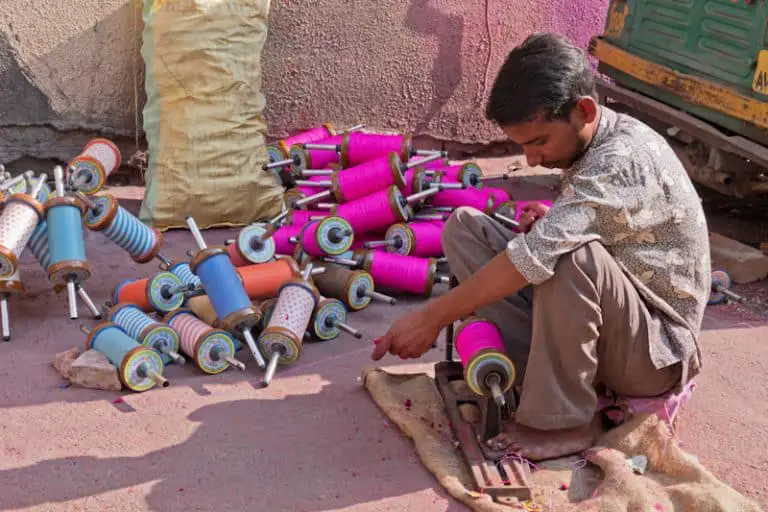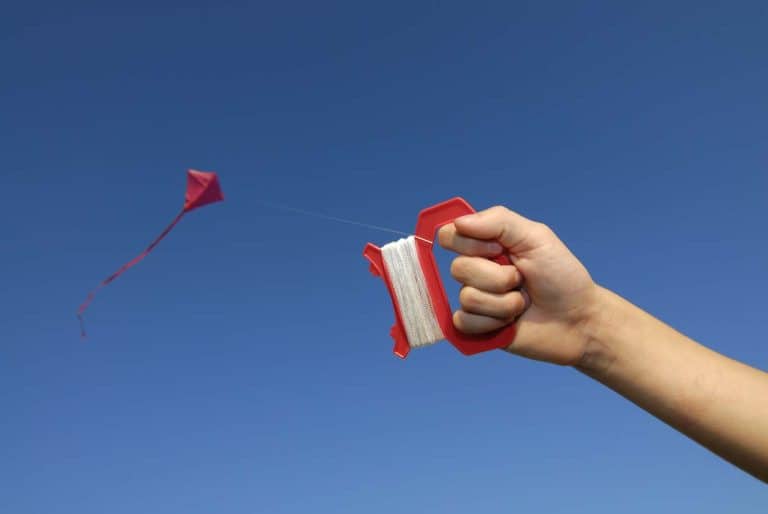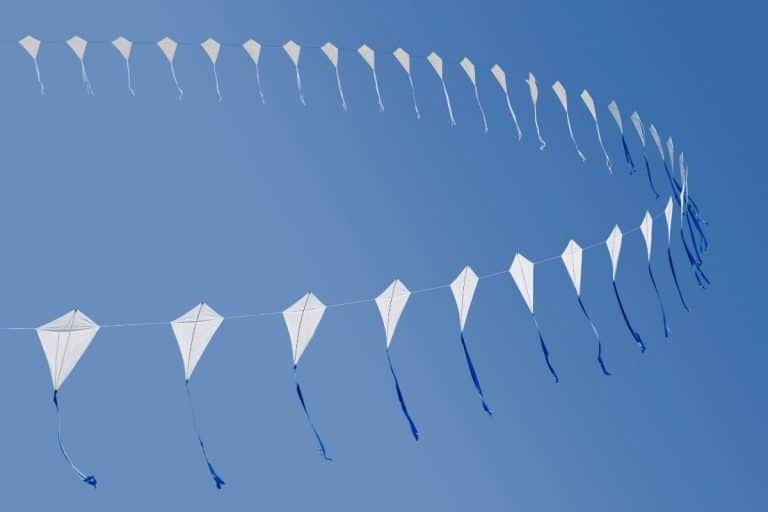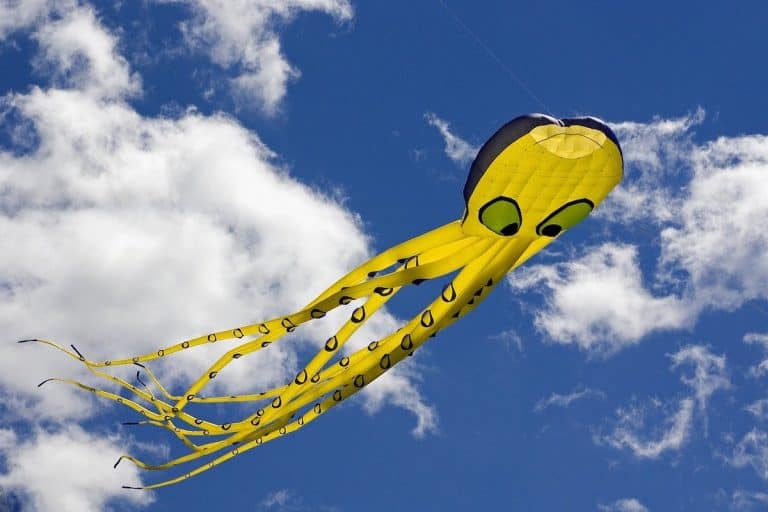The Best Knot For Your Kite
Are you wondering what the best knot for your kite is? Unfortunately, there are so many knots one can do that it is difficult to figure out which one you should use for best performance and security.
One of the most used and practical knots for a kite is Lark’s Head knot.The quality and type of knots can make the difference in preventing abrupt breaks while flying a kite.
In addition, knowing various knots allows a kite operator to perform emergency repairs if there is a break. This knowledge becomes even more critical for kiteboarding and power kites.
What Is The Best Knot For A Kite?
One of the most used and practical knots for a kite is Lark’s Head knot. It connects the kite line to the bridle in single kite lines and dual stunt lines. But not only. For example, it can attach a kite line to kite wrist straps and more.
Many call this knot a “cow hitch” because it comprises two half-hitches tied in opposite directions. The cow hitch is used in various fields and activities, not only in kiting. In fact, many use it to secure objects to a rope and even to connect the loop-ended lanyards to electronic equipment.
One of the peculiarities of Lark’s Head knot is that it will fasten even more when under pressure, thus preventing loosening and any breaking. As a result, I consider such a knot very simple, effective, and easy to use for beginners in the kiting world.
Since the first century, Lark’s Head knot or cow hitch has found use under various names. Sailors used it, but it was also used on land by farmers and workers. Its title “Lark head” was accredited to Tom Bowling, and it comes from the word “tête d’alouette,” which is the french name for this knot.
How Do You Tie A Knot For A Kite?
Since Lark’s Head knot is the one used the most to attach the kite line to the bridle of single kites line and other types of kites, here are a series of steps to take to tie a knot for your kite:
- Have a loop tied at the end of your line
- Put a finger and thumb in the loop and double over
- Put the kite’s tow-point through the loop
- Pull tight
The knot will remain tight until you want to release it. However, it is secure and won’t break or loosen.
In addition, You can tie lark’s Head knot anywhere on a kite line. Some people like to use a ring, or the kite has a ring to attach the string.
It is still possible to use a Lark’s head knot in this case. For example, some kites have a tab you can use to attach a “Pigtail.” Typically, you make the pigtail from a piece of kite line that you have to double over and knot.
How To Tie A String In Homemade Or Simple Kites?
If you want to fly a simple single line kite, or you are making your kite, here is how you can attach a string to it:
1. Make Two Holes In The Top Of The Kite
Make two holes at the intersection of the kite stick. You have to make sure that the holes are diagonally opposite to each other.
You should make the first two holes on the backside of a kite, one small hole 1 cm above the horizontal stick and the other diagonally opposite 1 cm below the horizontal post.
2. Make Two Additional Holes At The Bottom Of The Kite
It is now necessary to create two more holes below the two just made, toward the bottom of the kite.
You have to measure about 18 centimeters (or more depending on the size of the kite) below the intersection of the kite sticks and make small holes at both sides of the vertical kite stick.
3. Insert The String
Have your string ready and insert it into the top hole through the front of the kite. After that, you have to pull the string back toward you using the diagonally opposite hole.
4. Make A Knot At The Front Of The Kite
Once you have inserted the thread through the holes, you have to make a double knot at the front of the kite. To make the knot, you can fold one end of the string and hold it in one hand while you have the other end of the string in the other hand.
At this point, cross the folded string with the other one and push the folded end through the loop you created. Then pull the string tight to make the knot. If you do it one more time, you have a double knot.
5. Place The String Through The Bottom Holes
Like what you did with the top holes, you also have to thread the string through the bottom holes. So again, I recommend getting through a piece of string to one of the holes without pulling it tight.
Then it would be best if you threaded the end of the string back toward you using the other bottom hole. Create a double knot to prevent the string from coming undone.
6. Tie A Knot On The Loop Of Strings
It would be best to have a loop of strings coming out of the top and bottom holes. But, first, you have to create a knot at an equal distance connecting those stings. To do it, hold the strings away from the kite and, at equal distance and knot them together.
Those two strings coming out form a sort of bridle, and the knot you are creating that connects the two lines of the bridle is what you will connect to the kite line so that you can fly and maneuver the kite.
What Are The Best Knots For Kites Besides The Lark’s Head Knot?
It is always better to learn additional types of knots. So, if you find yourself with a broken line or any other situation in which a Lark’s Head knot may not be suitable, you’ll be okay.
Here are some of the best knots to use:
- Fisherman Clinch knot
- The Figure of Eight knot
- Overhand Loop
- Prusik Hitch
- Sheet Bend
- Triple Wrap Sheet knot
- Running knot
Type of knots and their uses
| Knot Type | Use |
| Fisherman Clinch knot | Create a stopper knot in the kite line |
| The Figure of Eight knot | To use a stronger knot than the simple loop knot |
| Overhand Loop | Attach a swivel to a kite line to reduce the tendency of the line to get twisted in flight |
| Prusik Hitch | As an alternative to Lark’s Head knot |
| Sheet Bend | Used to attach the loose end of a piece of the bridle line to the middle of another continuous piece |
| Triple Wrap Sheet knot | Used to connect a loose end to a continuous length of the line |
| Running knot | Used to attach the bridle to the kite frame |
The overhand knot creates a stopper knot in the kite line, primarily for kite bridles. People use the Fisherman’s Clinch knot to attach a swivel to a kite line to reduce the line’s tendency to get twisted in flight.
The Prusik Hitch is comparable to a double Lark’s Head knot, and we use it as an alternative to it. It has its advantages because it can roll over itself to lock tight the set position. You can reopen it to allow a position adjustment.
In kiting, we use the Overhand Loop as a substitute for the Lark’s Head knot because it is easier to remove. Some people like to tie an overhand knot at the end of the sleeving loop because they can hold onto something when removing a Lark’s Head knot.
Loop Knot Variations
| Type Of Knot | Uses |
| Simple Loop knot | – To use it in the middle of small kites lines (not big ones)- Stop a Lark’s Head from slipping off the bridle line |
| Double Loop Knot | -5% stronger than the Simple Loop when tied in the middle of a line |
| The figure of Eight Loop Knot | -10% stronger than the Simple Loop |
| Butterfly Loop Knot | -The stronger for the middle of the line |
The Sheet Bend is often used to attach the loose end of a piece of the bridle line to the middle of another continuous piece. This knot holds very well, and it is also easy to loosen and adjust.
I use the Triple Wrap Slip Knot to connect a loose end to a continuous length of the line and activator legs to the main bridle legs. People often use the Running Knot to attach the bridle to the kite frame.
Frequently Asked Questions
How to attach a stunt kite line to wrist straps?
Since many stunt kite’s wrists have a short loop with an overhand knot to attach their line-sets, it is best to use a Lark’s Head knot to connect the kite line.
How long should a kite string be?
The length of the string should be determined based on how responsive one wants a kite to be. Typically, the shorter the line, the fastest the response is. Therefore, beginners should start with a short line between 20-30 feet, and experienced users should use longer ones.







